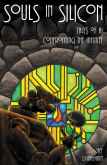
How bad were the Golden Age pulps, really? Thirty-odd years ago I had a few SF pulps from the late 1930s, and while I’m not sure where they ended up, I remember the cognitive dissonance that arose from knowing that I should despise them–while in fact enjoying them a lot. Reading them was a little like watching old B-movies like The Crawling Eye: You know damned well they weren’t literature, but somehow they kept your attention and made the time pass..which is exactly what they were created to do.
Few people–especially those under 40–realize just how broad a phenomenon the pulps were, and how small a part of it SF actually was. Beyond SF and fantasy there were sports pulps, many subspecies of crime/detective pulps, adventure pulps, romance pulps, aviation pulps, western pulps, railroad pulps, and doubtless others that I’ve never heard of. The SF pulps were better than I’d been led to believe, and I started wondering recently whether the SF pulps were outliers, or whether the pulps as a phenomenon and even a literary form have been slandered out of proportion by the ultrasophisticated artsy elite.
I bought a couple of railroad pulps pretty much at random on eBay not long back, and have been reading them as time permits. The cover above is from the May 1933 issue of Railroad Stories. I also bought the August 1935 issue and found with a grin that the cover author and the cover artist were the same in both issues: E. S. Dellinger writing the cover stories (both novelettes of about 10,000 words) with Emmett Watson on watercolors. I chose railroad pulps because I like railroads; I’m not sure I could have bulled through a sports pulp or a true crime pulp.
Being a magazine guy myself, at my first flip through the issue I was startled: These books had almost no ads! The back cover and inside covers were full-pagers, and the single-page TOC was set within a 4-page block of fractional ads, generally 1/8 page items hawking hair tonic or remedies for hemmorhoids. And that was it. There were no ads whatsoever set in or between the stories themselves. It’s obvious that they didn’t pay much for the paper (and we know they paid almost nothing for the stories) but I boggle that the 15c for a single issue or $1.50 for a full year carried that much of the operation.
The inside front cover ad seemed odd for a railroad pulp: Dr. Frank B. Robinson pushing his artificial religion Psychiana. On the other hand, readers of Popular Mechanics were never too far from discovering the secrets of the Rosicrucians, and this was clearly their competition.
The TOC divides each issue into three sections: Fiction, nonfiction, and departments. Fiction was less of it than I had thought. A quick tally shows about a third of the editorial to be fiction, and probably half nonfiction. The departments include a joke page, a question-and-answer column about railroad history and tech, news items submitted by readers, short items from readers who worked at railroad jobs, and a scattering of railroad poems.
So…how bad was the writing? What were the stories about? Tune in next time, kids!

 There’s concept, and there’s execution. You need both to make a truly terrific work of fiction, whether on film or in text. I had high expectations for Planet 51, and the concept did not disappoint me: A loopy twist on the classic alien monster movies of the 1950s…except that this time, we’re the aliens, landing on a planet full of…1950s aliens.
There’s concept, and there’s execution. You need both to make a truly terrific work of fiction, whether on film or in text. I had high expectations for Planet 51, and the concept did not disappoint me: A loopy twist on the classic alien monster movies of the 1950s…except that this time, we’re the aliens, landing on a planet full of…1950s aliens. The film is carried largely by the brilliant little robot Rover, who acts like a very bright dog with a power screwdriver, and gets most of the good sight gags and physical humor, including a surreal riff on “Singin’ in the Rain,” as it rains…rocks. (Rover’s job is to pick up rocks, like any good interplanetary probe. Alien rain is thus a species of nirvana for him.)
The film is carried largely by the brilliant little robot Rover, who acts like a very bright dog with a power screwdriver, and gets most of the good sight gags and physical humor, including a surreal riff on “Singin’ in the Rain,” as it rains…rocks. (Rover’s job is to pick up rocks, like any good interplanetary probe. Alien rain is thus a species of nirvana for him.)









